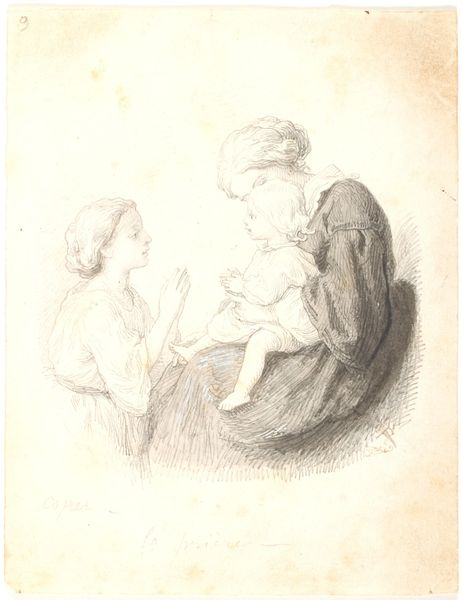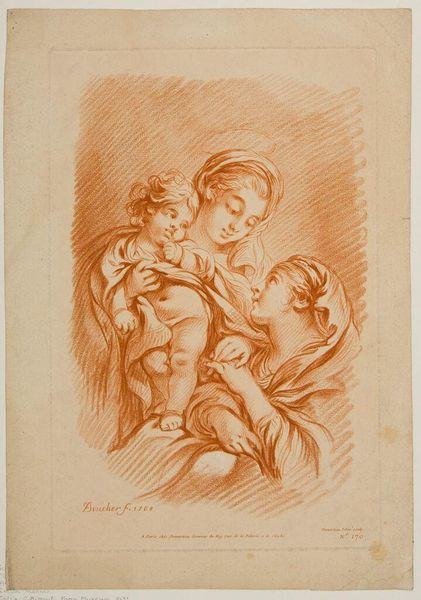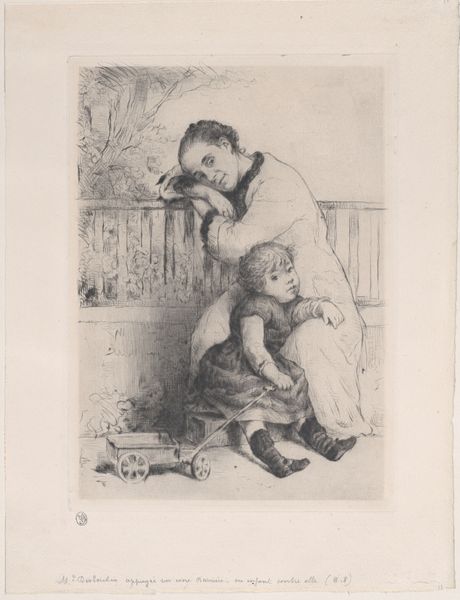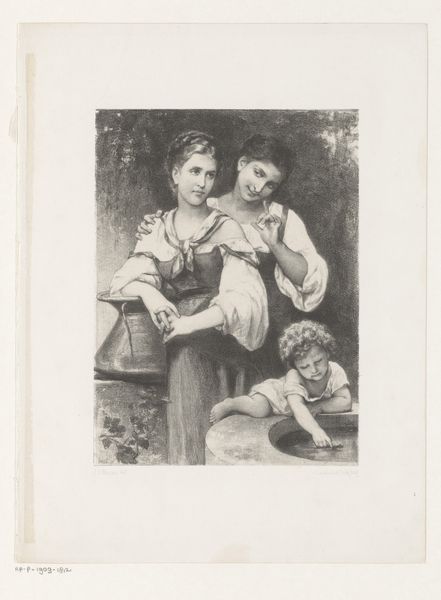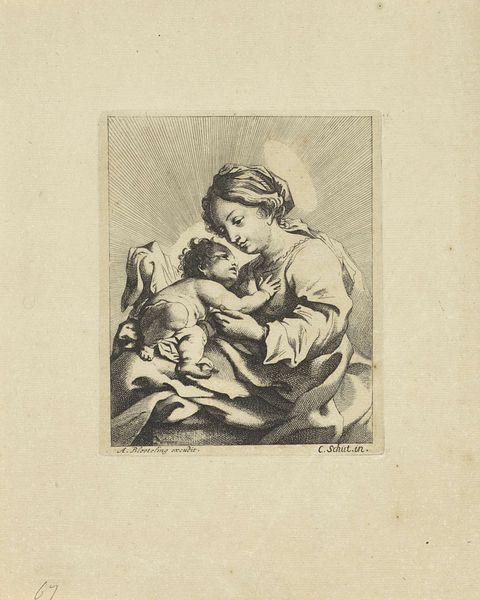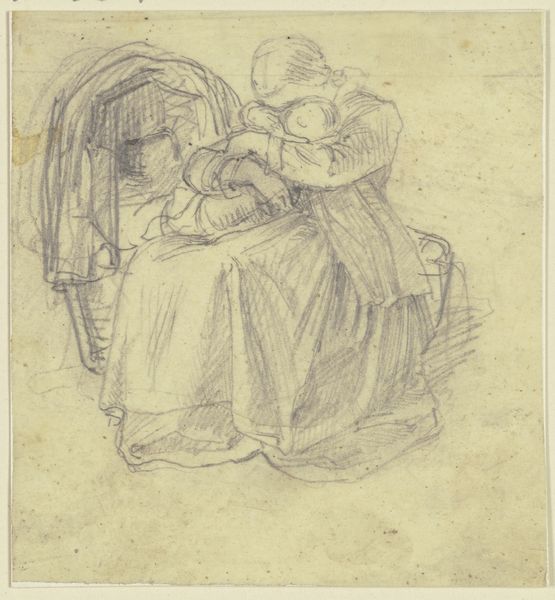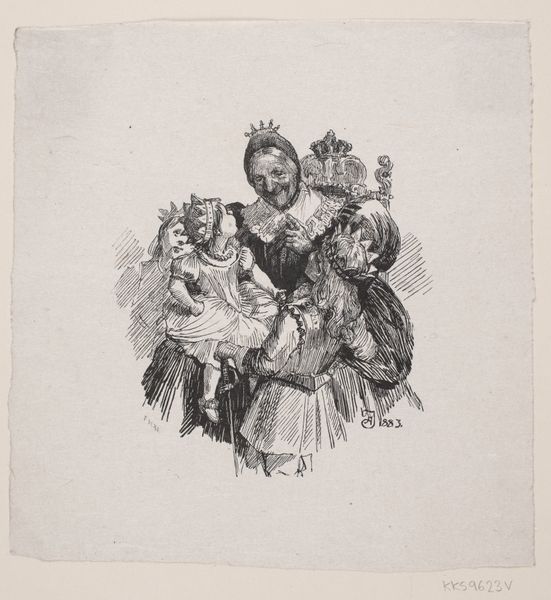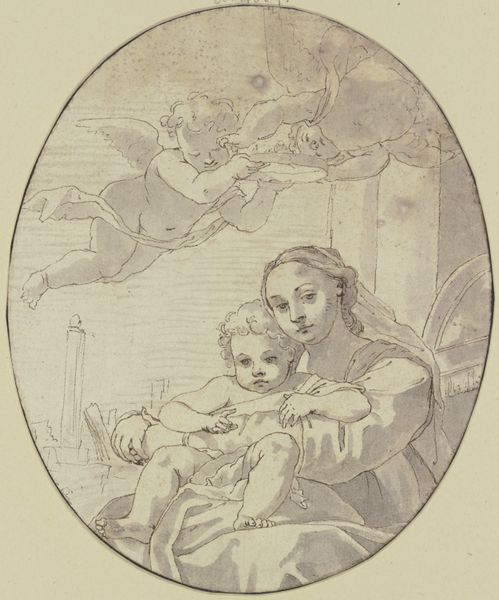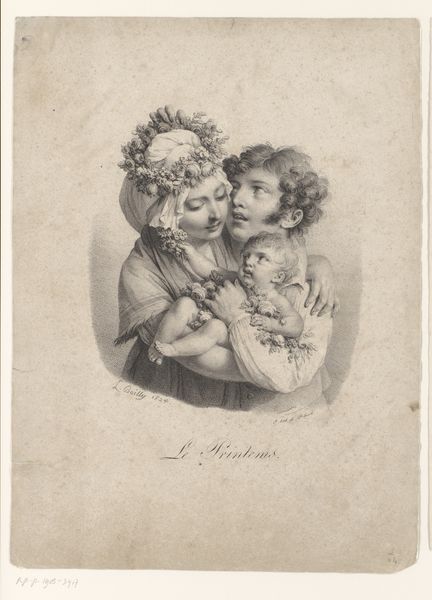
Dimensions: height 106 mm, width 106 mm
Copyright: Rijks Museum: Open Domain
Curator: This drawing, "Vrouw met twee kinderen," or "Woman with Two Children," comes to us from the hand of Isaac Weissenbruch, dating roughly from 1836 to 1912. You can find it here at the Rijksmuseum. Editor: My initial impression is a tenderness. It feels intimate, like a fleeting glimpse into a private moment, rendered with such delicate pencil strokes. Curator: Precisely. Weissenbruch's work often explores themes of domesticity, and this piece fits squarely within that framework. Consider the social context of the time: the rise of the middle class and the increasing value placed on family life as a stable social unit. Editor: Yes, but I am immediately drawn to the visible process. You can almost trace the artist's hand as he builds form with these networks of tiny lines. It looks like graphite, probably relatively soft looking at the breadth of shades of grey Weissenbruch achieves here. What’s really remarkable is that through such simple means he's created such an enduring symbol, perhaps a monument even, to mothering. Curator: The seemingly effortless execution masks the deliberate construction of the image. Weissenbruch was, in effect, codifying and perhaps idealizing certain expectations and values regarding women's roles in society. Editor: Absolutely, though that idealization doesn’t feel like a deliberate construction but rather something discovered by Weissenbruch in front of the motif and its humble materials: a woman and her children, graphite and paper. You could see this simple act of drawing as akin to the labour of mothering: the everyday made noble by love and attention. Curator: A potent connection, indeed. Looking at Weissenbruch’s body of work within a broader artistic and historical perspective helps to see how artistic expressions can be so much more than the simply 'discovered' image of humble materials. It reflects shifts in societal values, and, as with “Vrouw met twee kinderen”, a drawing becomes a lens to view shifts in gender dynamics and evolving family models. Editor: Well, that's certainly given me some fresh perspectives on the way we read these quiet moments through material practices and representations. Curator: Agreed. I'll certainly be thinking more about the power of observation after this discussion.
Comments
No comments
Be the first to comment and join the conversation on the ultimate creative platform.
